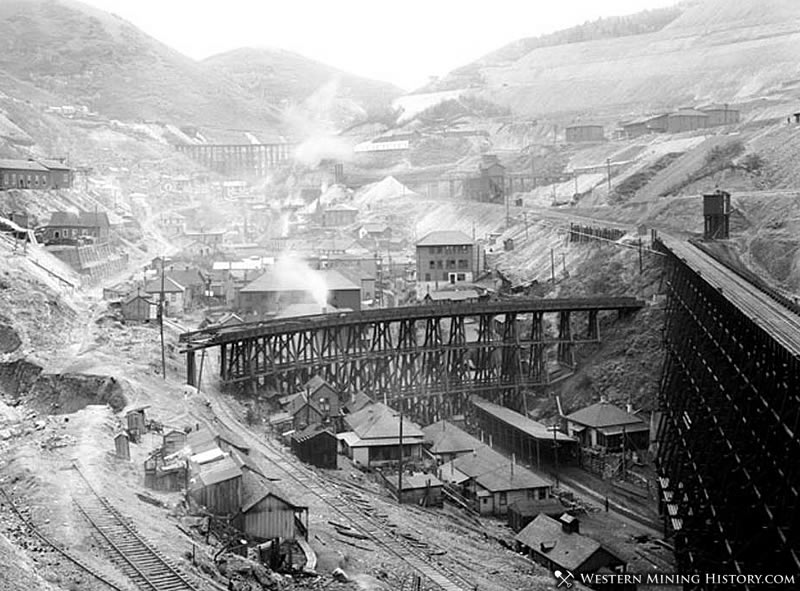Bingham History
Bingham was a city formerly located in southwestern Salt Lake County, Utah, United States, in a narrow canyon on the eastern face of the Oquirrh Mountains.
Related: Underground Hoist Room Construction Captured in Photo Series at the U.S. Mine at Bingham
Bingham Canyon was first settled in 1848 by the Mormon settlers Thomas and Sanford Bingham. The area was initially used for livestock and lumber.
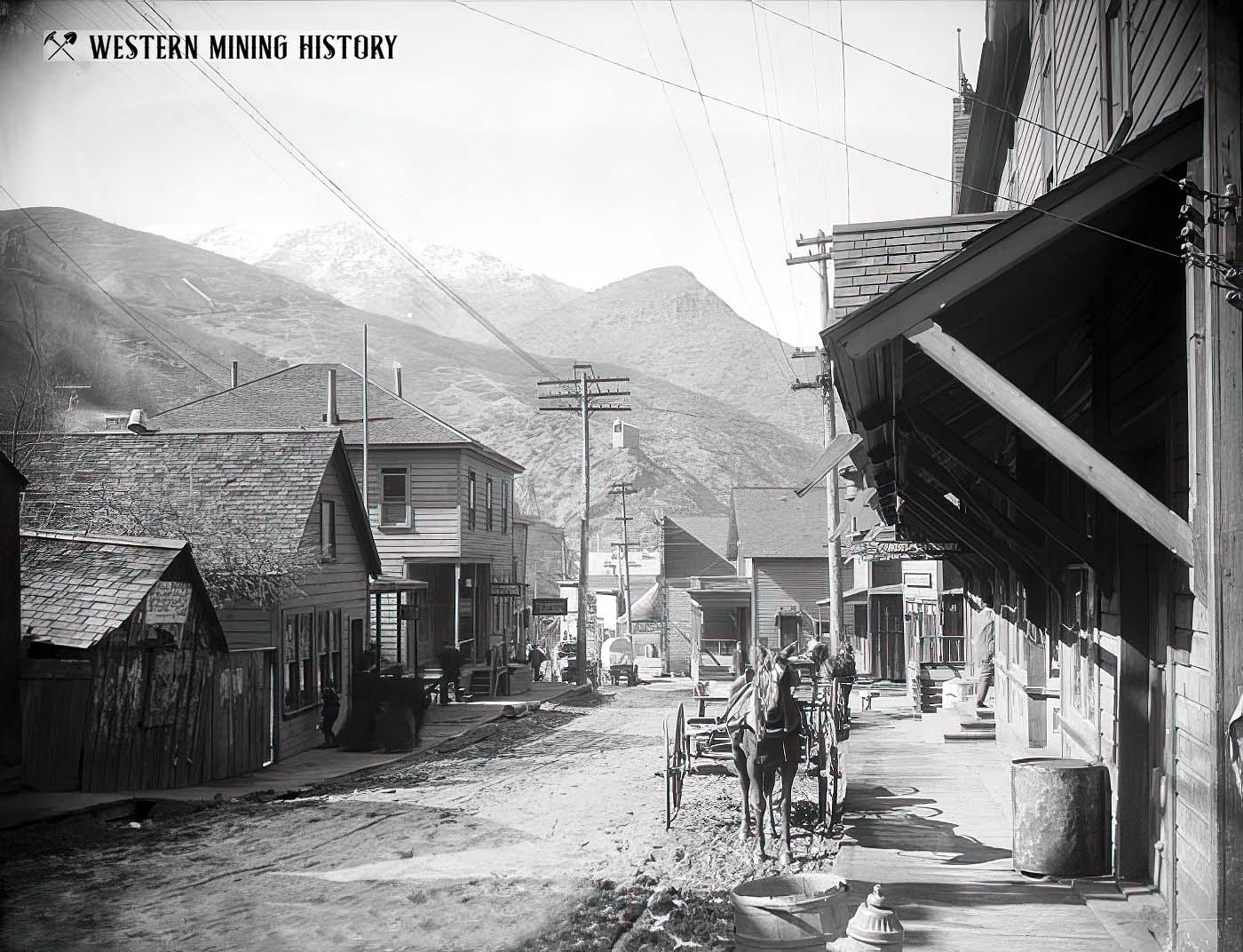
Ore discoveries were made by the early settlers, but the Mormon church discouraged mining at the time and the discoveries were ignored and eventually forgotten.
Rich gold and silver ore were discovered in the area again during the early 1860s. A mining district was organized, but was slow to develop as the remote location of the mines and the high cost of moving goods by wagon on crude roads made mining uneconomical.
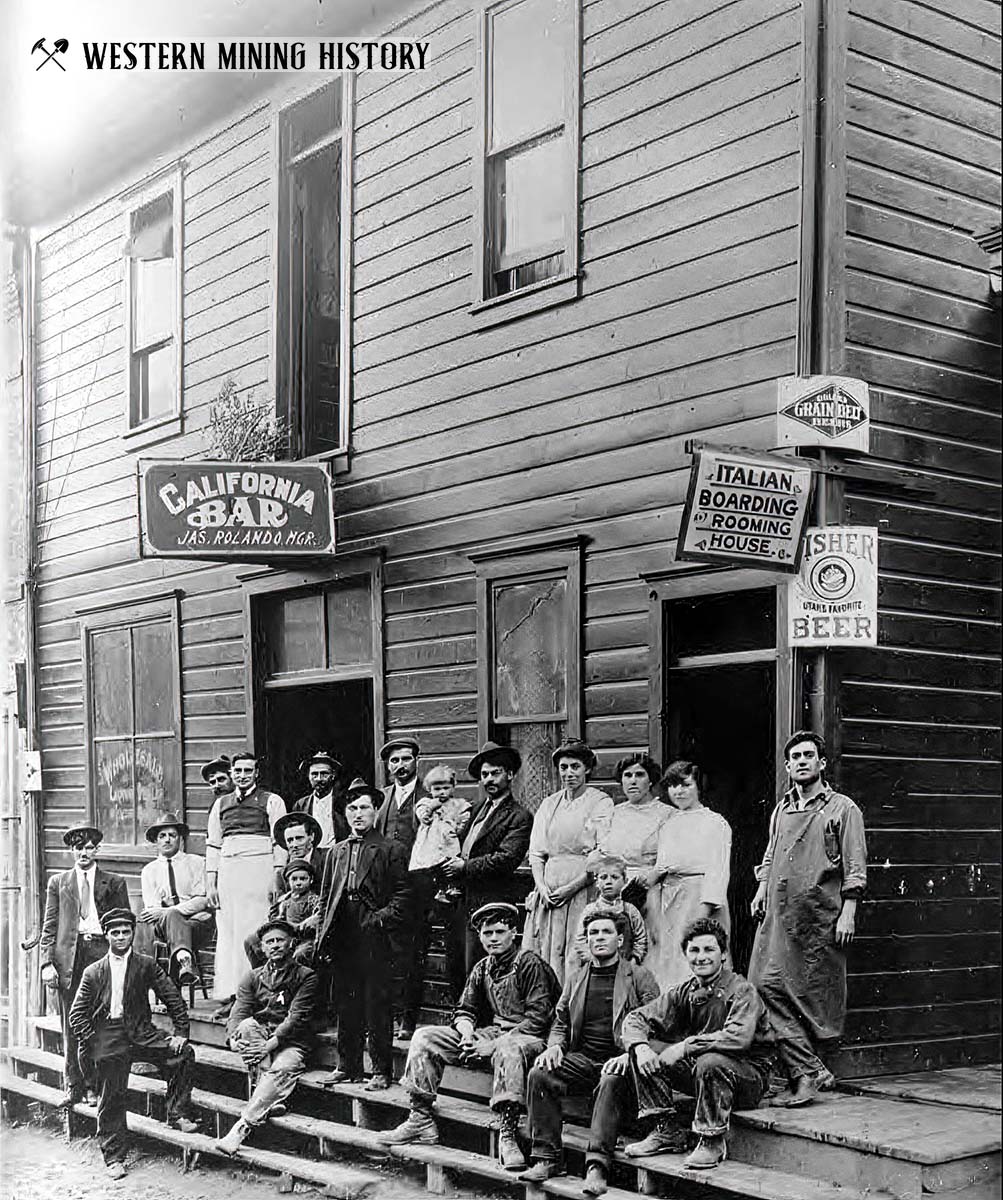
A few miners persevered and rich gold placers were discovered in Bingham Creek. A few lucky prospectors struck it rich, but most barely managed to survive during these early years and only around a hundred miners had settled in the area by the end of the 1860s.
In 1873 the Bingham and Camp Floyd branch of the Utah Central Railroad was completed which drastically changed the mining situation at Bingham Canyon. Transportation of heavy equipment became viable, and lode mining of rich discoveries began in earnest. Mills and smelters were built and Bingham Canyon became a prosperous mining region.
By the end of the century a boom in copper mining was taking shape at Bingham Canyon. Small mines were consolidated in the hands of large mining companies that had the resources to develop the mines on a scale not previously possible.
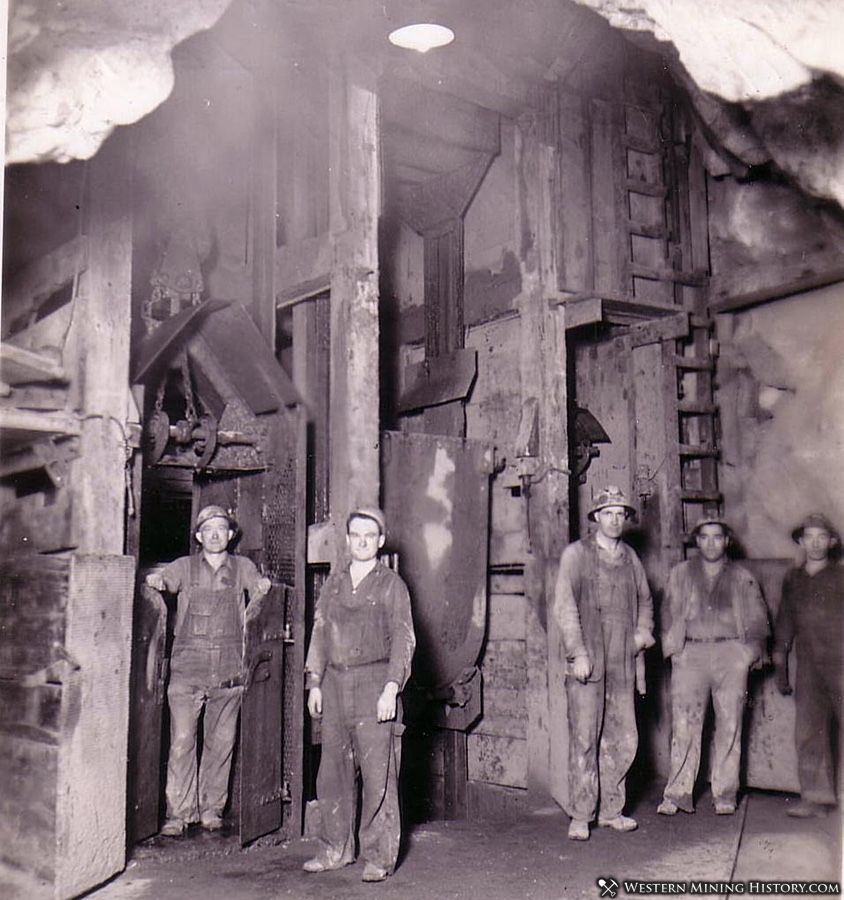
Rising demand for copper transformed Bingham into a major industrial city. Miners from around the world called Bingham home, and during the 1920s the city peaked with over 15,000 residents.
Many mining towns are known for being built in unlikely or precarious locations, but Bingham was likely the most extreme example. Built in a very narrow canyon, the town spanned almost seven miles along just one main road. Various ethnic neighborhoods made up the residential portions of the city, with many nations being represented like Italy, France, Ireland, Great Britain, Japan, and many others.
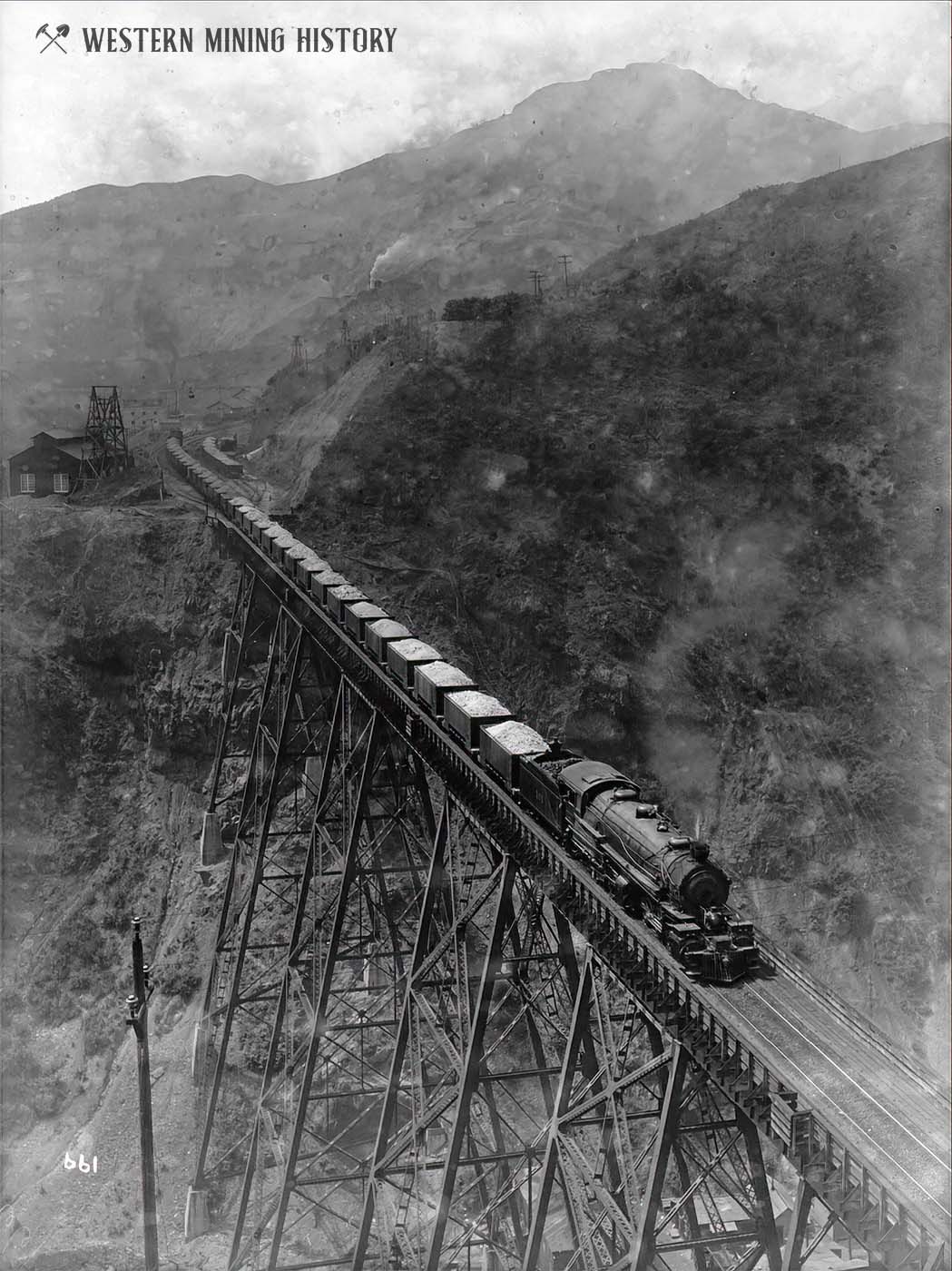
The success of the local mines eventually proved to be the town's undoing, however: by the mid-twentieth century the huge open-pit Bingham Canyon Mine began encroaching on the community. The last buildings were razed in 1972 and the expanding pit swallowed the entire town site.
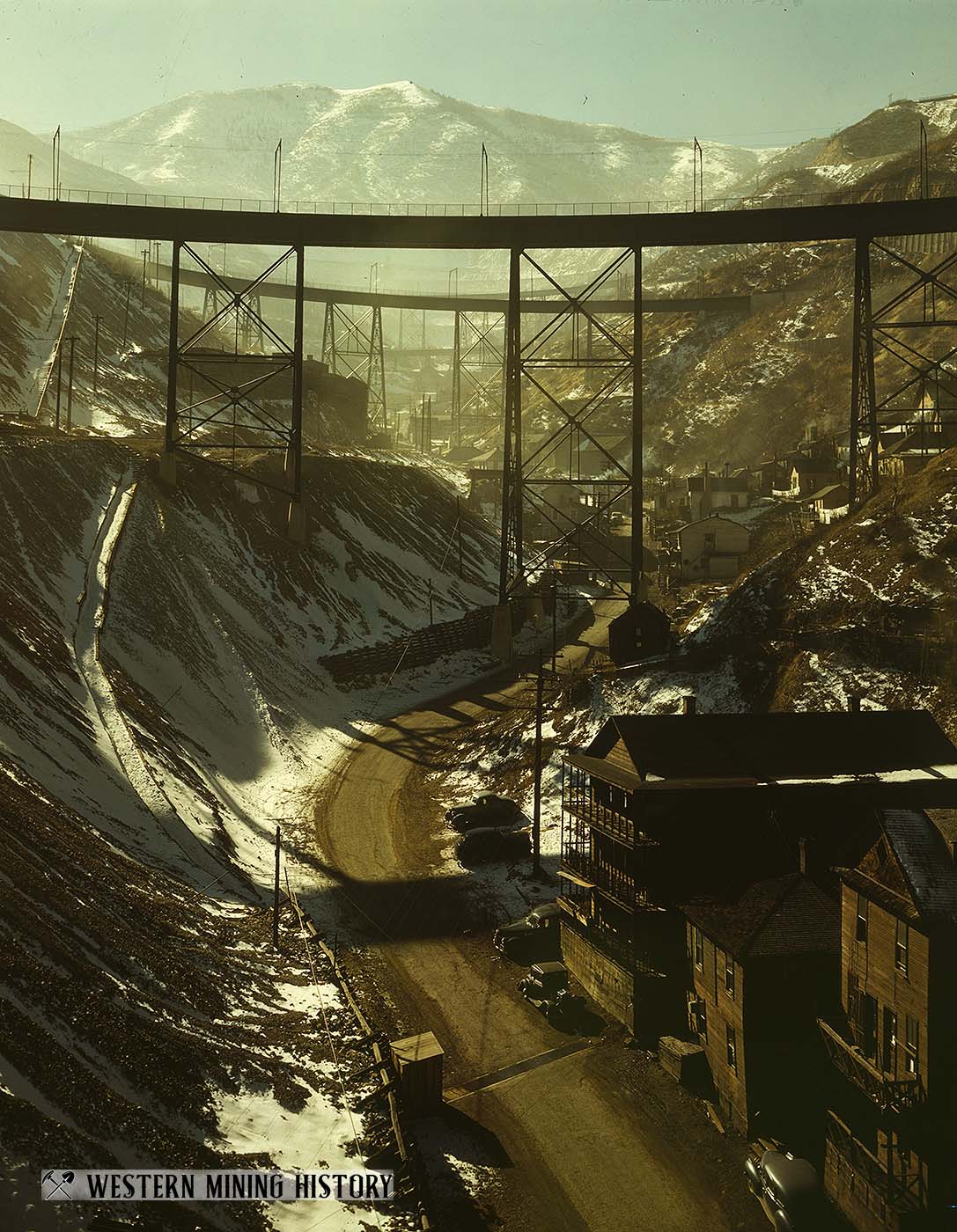
No trace of the former town remains today. Bingham is the largest mining city to be swallowed completely by an open-mine.
Principal Gold Districts of Utah
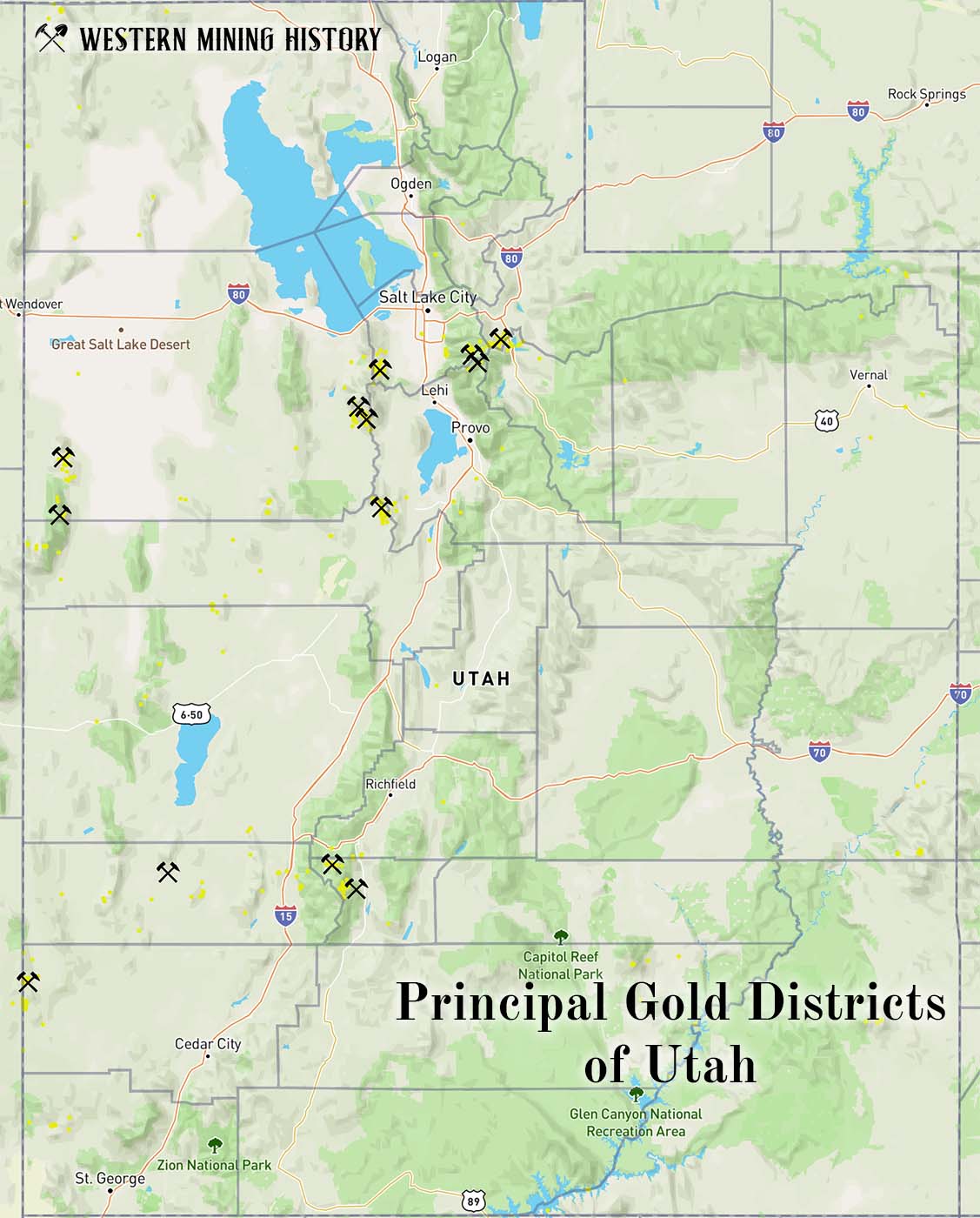
Utah produced approximately 17,765,000 ounces of gold through 1960, making it sixth among the gold-producing states. Thirteen districts in nine counties yielded more than 10,000 ounces of gold each. Read more: Principal Gold Districts of Utah.
